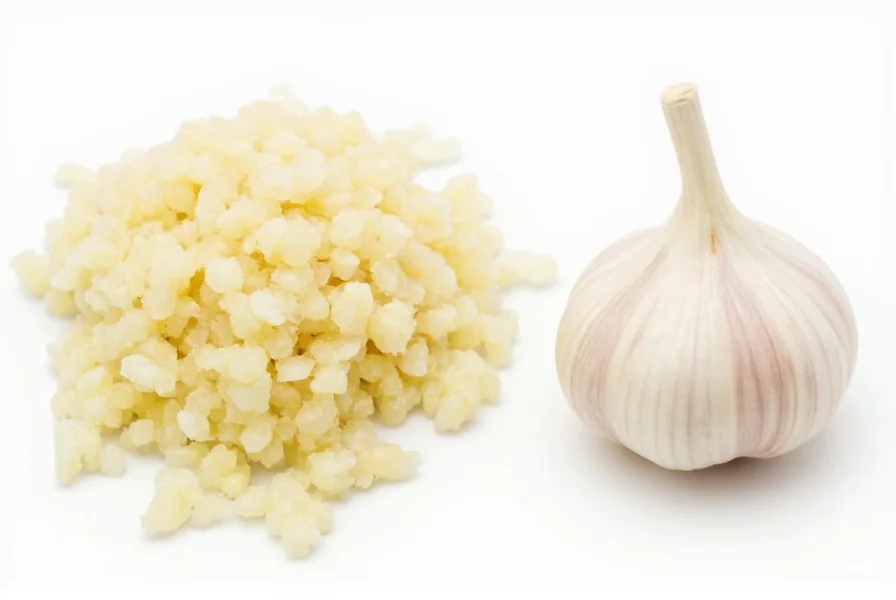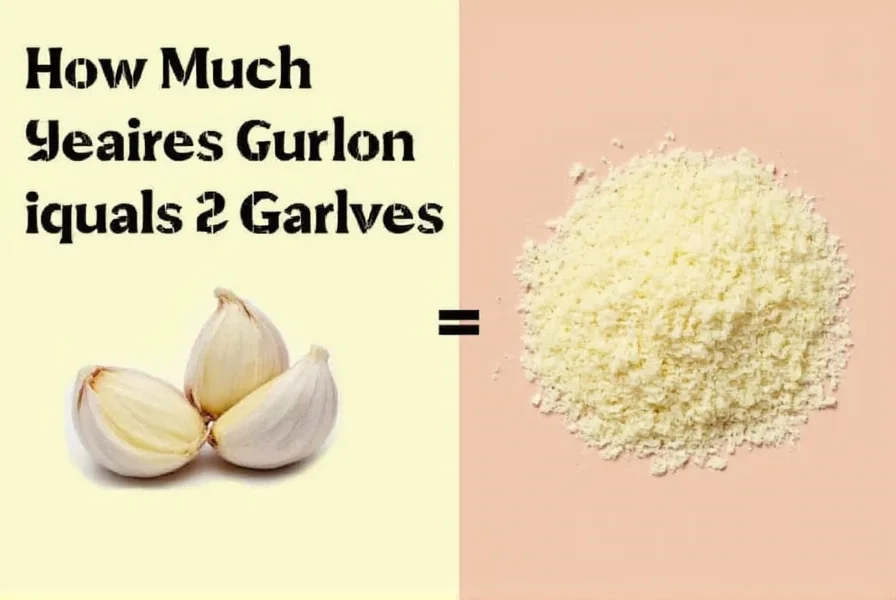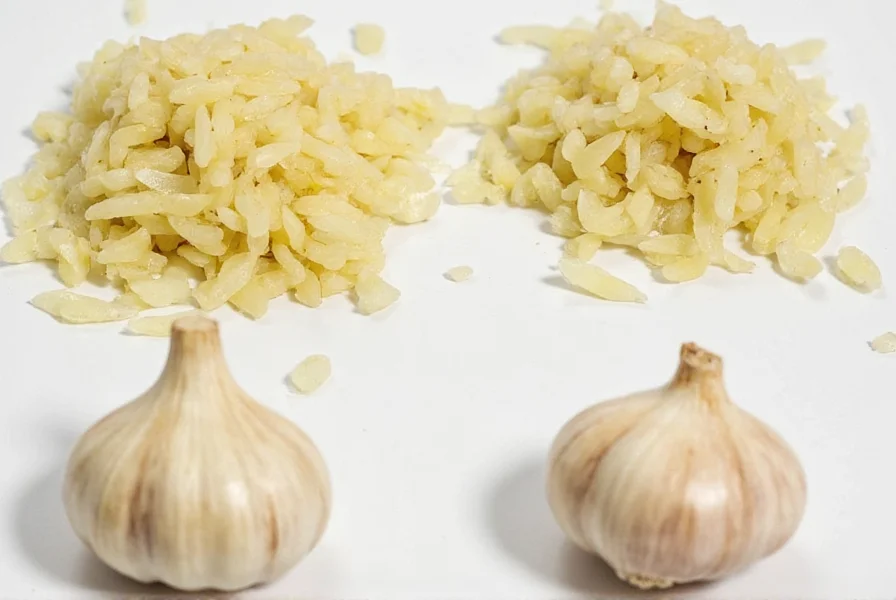Understanding garlic measurements is crucial for home cooks and professional chefs alike. When recipes call for minced garlic but you're working with whole cloves, knowing the exact conversion ensures your dishes maintain the intended flavor profile without becoming overpowering or too mild.
Garlic Conversion Basics
The relationship between whole garlic cloves and their minced equivalent depends primarily on clove size. Most standard cooking references use medium-sized cloves as the baseline for conversions. A single medium garlic clove yields about 1 teaspoon of minced garlic, making two cloves equivalent to 2 teaspoons.
| Garlic Cloves | Minced Garlic Equivalent | Garlic Powder Equivalent |
|---|---|---|
| 1 small clove | ½ teaspoon | ⅛ teaspoon |
| 1 medium clove | 1 teaspoon | ¼ teaspoon |
| 1 large clove | 1½ teaspoons | ⅜ teaspoon |
| 2 medium cloves | 2 teaspoons | ½ teaspoon |
| 3 medium cloves | 1 tablespoon | ¾ teaspoon |
Factors Affecting Garlic Measurements
Several variables influence the precise conversion from whole cloves to minced garlic:
Clove Size Variability
Garlic cloves vary significantly in size depending on the variety and growing conditions. A single head of garlic typically contains cloves ranging from small to large. When precision matters, consider sorting your cloves by size before mincing.
Mincing Technique
The method you use to mince garlic affects the final volume:
- Hand-mincing with a knife typically yields slightly more volume than machine-mincing
- Pressing garlic through a garlic press creates a denser product
- Finely minced garlic packs more tightly than roughly chopped
Moisture Content
Freshly minced garlic contains moisture that can affect measurements. For recipes sensitive to liquid content, consider this when substituting minced for whole cloves.

Practical Cooking Applications
When following recipes that specify minced garlic but you're working with whole cloves, these practical tips will help maintain recipe integrity:
When Precision Matters
For delicate sauces, dressings, or dishes where garlic flavor balance is critical, use the conversion chart above for accurate measurements. This is particularly important in:
- Vinaigrettes and emulsified sauces
- Marinades with short processing times
- Dishes featuring subtle flavor profiles
When Approximation Works
In heartier dishes like stews, braises, or roasted vegetable preparations, the exact measurement matters less. In these cases, tasting and adjusting is more important than precise measurement.
Substitution Guidance
If you need to substitute other garlic forms:
- 1 teaspoon minced garlic = ½ teaspoon garlic paste
- 1 teaspoon minced garlic = ¼ teaspoon garlic powder
- 1 teaspoon minced garlic = ½ teaspoon garlic juice
Remember that processed garlic products often have more concentrated flavor than fresh, so adjust accordingly.
Professional Chef Tips
Experienced chefs recommend these techniques for working with garlic measurements:
- "Mince garlic just before use for maximum flavor impact"
- "When in doubt between 1½ or 2 teaspoons for two cloves, start with less—you can always add more"
- "Consider the dish's cooking time; longer cooking reduces garlic's sharpness"
- "For raw applications like salad dressings, use slightly less minced garlic than cooked dishes"

Common Measurement Mistakes to Avoid
Many home cooks make these errors when converting garlic measurements:
- Assuming all cloves are the same size
- Not accounting for how tightly minced garlic is packed in the spoon
- Using garlic powder equivalents without adjusting for stronger flavor
- Adding all garlic at the beginning of cooking, causing bitterness
FAQ: Garlic Measurement Questions
How much jarred minced garlic equals 2 fresh cloves?
Two fresh garlic cloves equal approximately 2 teaspoons of jarred minced garlic. However, jarred garlic often contains preservatives and has a slightly different flavor profile, so you may want to use 10-15% less than fresh for equivalent flavor intensity.
Does the size of garlic cloves significantly affect recipe outcomes?
Yes, size variations can substantially impact flavor. A large clove may contain up to three times the volume of a small clove. For critical recipes, sorting cloves by size before mincing ensures consistent results. When recipes specify "medium" cloves, they typically mean cloves that measure about 1 inch long and ½ inch in diameter.
Can I substitute garlic powder for fresh minced garlic in a 1:1 ratio?
No, garlic powder is significantly more concentrated. The proper conversion is ¼ teaspoon garlic powder for every 1 teaspoon of fresh minced garlic (or one medium clove). Using equal amounts would result in overpowering, potentially bitter flavors.
How should I store leftover minced garlic?
Store leftover minced garlic in an airtight container in the refrigerator for up to 5 days. For longer storage, freeze minced garlic in ice cube trays covered with olive oil, then transfer the frozen cubes to a freezer bag. Properly stored, frozen garlic maintains quality for 3-4 months.
Why does my minced garlic sometimes turn blue or green?
This natural color change occurs when garlic's sulfur compounds react with acids or metals during cooking. It's completely safe to eat and doesn't affect flavor. The reaction is more common with immature garlic or when using certain types of cookware. The color typically returns to normal as cooking continues.











 浙公网安备
33010002000092号
浙公网安备
33010002000092号 浙B2-20120091-4
浙B2-20120091-4